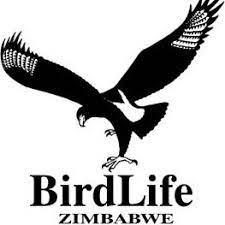BIRDING IN ZIMBABWE
The Matopos National Park

Mocking Cliff-chat

Martial Eagle

Verreaux’s Eagle
The Matopos National Park (also called Matobo) is made up of hills of granite that lie approximately 30km south of Bulawayo. In 2003, the global importance and significance of the Matopos was recognized, and the Park and surrounding area were added to the UNESCO World Heritage List. The area has also been listed as number Z018 on the “Important Bird Areas” of Zimbabwe. There are no threatened or restricted-range species that seem to depend on the hills, but Cape Vultures fly over, and in wet years Corn Crake inhabit the vleis – both classified as globally threatened species.
The area’s extraordinary landscape is breathtaking. It consists of great smooth whale-backs or dwalas, broken granite hills or kopjes with incredible displays of balancing rocks defying all the laws of gravity, interspersed with grass-filled valleys or vleis. These hills have had a long history of human occupation, and are one of the most extensively archaeologically researched areas in Zimbabwe. There are many, many rock art sites, and the drier climate has assisted in the preservation of these diverse, remarkable paintings. Vegetation is mixed, with a tendency towards species that can tolerate a drier climate, such as the Colophospermum mopane and thorny Acacia. The grasslands are studded with Silver-leaved Terminalia/mangwe.
This unusual combination of granite and grass has given the Matopos National Park the benefit of having 35 of the 43 ‘Protected Species’ of birds in Zimbabwe. Around 340 species of bird have been recorded in the area.
Matopos is home to many raptor species, and is home to the highest concentration per square kilometre of Verreaux’s Eagle in the world. BLZ Matabeleland Branch has carried out an annual Verreaux’s Eagle Breeding survey since 1964, making it the longest running survey of its kind in the world.
A trip to the Matopos will satisfy the birder’s wish to identify raptors. The sighting of the Verreaux’s Eagle is virtually guaranteed… other resident raptors include the African Crowned Eagle, Martial Eagle, African Hawk-eagle, Augur Buzzard, Black-chested and Brown Snake-eagle, African Fish-eagle, Bateleur, Lanner Falcon, African Harrier-hawk, Gabar Goshawk and Rock Kestrel, to name but a few. The summer months bring many additional species of raptor that migrate to the south – for example the Yellow-billed and Black Kite, Wahlberg’s Eagle and Steppe Eagle. Along with this unusually high number of raptor species, many bush birds may be found. The Mocking Cliff-chat and Boulder Chat are regularly spotted at the camping and picnic sites situated in the Park. An average day’s birding in this extraordinary landscape should produce a very satisfactory personal list of species.
For places to stay, see below.
Image credits: Mocking Cliff-chat, Martial Eagle & Verreaux’s Eagle by Roger MacDonald
